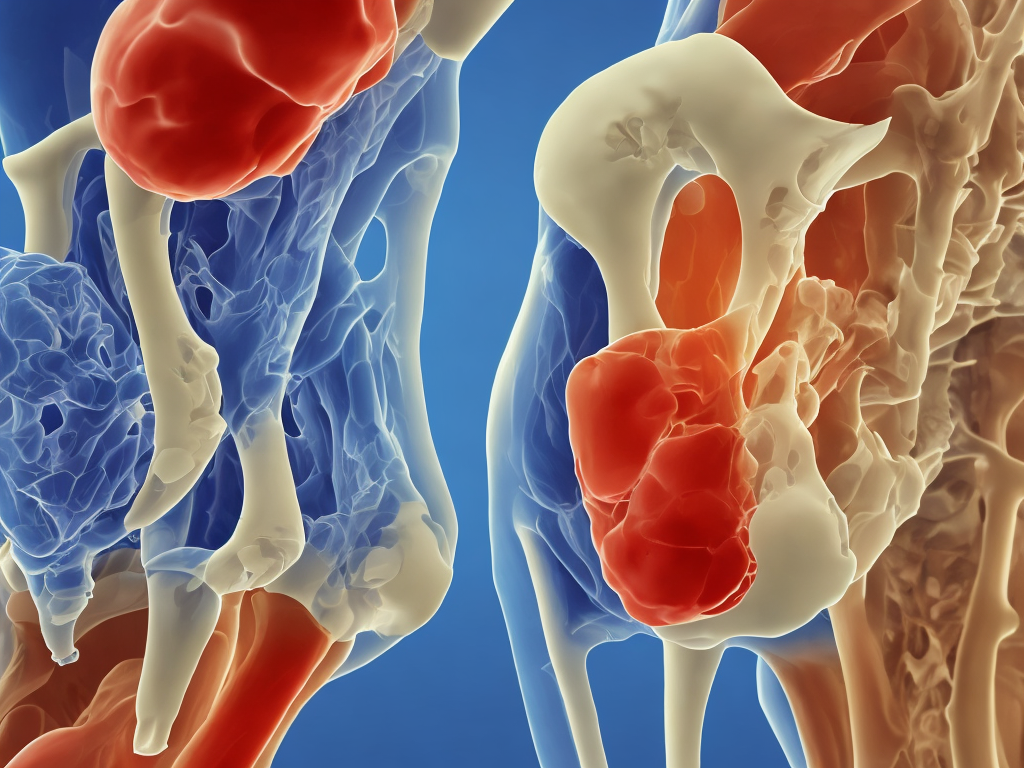
Bone and cartilage are two essential connective tissues in the human body. These tissues play a significant role in maintaining the structural integrity of the body. Bones provide support and aid in movement, whereas cartilage is more flexible and serves as a cushion and shock absorber between bones and joints. Despite their similar function, bone and cartilage differ greatly in terms of structure, composition, and function.
Structure
Bones are composed of calcium, phosphorus, and other minerals that make them solid and strong, while cartilage is made up of collagen and elastin fibers, which make it elastic and flexible. Bones are also highly vascularized, meaning they have a rich blood supply to support their structure and function, whereas cartilage is avascular, meaning it has no blood vessels.
Bones are organized into units called osteons or Haversian systems, which are cylindrical structures that run parallel to the long axis of the bone. Each osteon consists of concentric layers of bone tissue called lamellae, which surround a central canal called the Haversian canal. This canal contains blood vessels that supply nutrients and oxygen to the bone cells, as well as nerve fibers that transmit signals from the bone to the brain.
Cartilage, on the other hand, consists of chondrocytes or cartilage cells embedded in a matrix of collagen and elastin fibers. This matrix is water-rich, which gives cartilage its compressive and shock-absorbing properties. There are three types of cartilage in the human body: hyaline cartilage, elastic cartilage, and fibrocartilage. Hyaline cartilage is found in the joints and respiratory tract, elastic cartilage is found in the ears and nose, and fibrocartilage is found in the intervertebral discs and joints.
Composition
Bones and cartilage differ greatly in terms of the composition of their extracellular matrix, which is the non-cellular component that surrounds and supports the cells within the tissue.
Bone matrix consists of 25% water, 25% collagen fibers, and 50% crystalline mineral salts, mainly calcium and phosphate. The collagen fibers provide the bone with its tensile strength, while the mineral salts give it its compressive strength. Bone also contains various proteins, growth factors, and hormones that regulate bone growth, development, and repair.
Cartilage matrix, on the other hand, is made up of 60-80% water, 10-20% collagen fibers, and various proteoglycans, glycoproteins, and other proteins. The proteoglycans are highly charged, which attracts water and allows the cartilage to resist compressive forces. The collagen fibers provide the cartilage with its tensile strength, while the glycoproteins help to anchor the collagen to the matrix. Cartilage also contains various growth factors and cytokines that regulate its synthesis and degradation.
Function
Bones and cartilage perform different functions in the human body, although they often work together to provide support and movement.
Bones serve several critical functions in the body, including providing support and protection for organs and tissues, aiding in movement and locomotion, storing minerals such as calcium and phosphate, and producing blood cells in the bone marrow. Bones are also involved in the regulation of calcium and phosphate levels in the blood, which is essential for maintaining normal muscle and nerve function.
Cartilage, on the other hand, serves as a cushion and shock absorber between bones and joints, reducing friction and allowing for smooth movement. Cartilage is also involved in growth and development in children, providing a template for bone formation. Some types of cartilage, such as the articular cartilage in the joints, are also involved in joint lubrication and nutrition.
Conclusion
In conclusion, bone and cartilage are two critical connective tissues in the human body, each with its unique structure, composition, and function. Bones are solid, highly vascularized structures composed of calcium, phosphorus, collagen, and other materials that provide support and protection, aid in movement, store minerals, and produce blood cells. Cartilage, on the other hand, is a flexible, water-rich tissue composed of collagen, proteoglycans, and other materials that serves as a cushion and shock absorber, reducing friction and allowing for smooth movement in the joints. Despite their differences, both bone and cartilage are essential for maintaining the structural integrity of the human body and allowing for normal function and movement.
 Self-Instruct
Self-Instruct